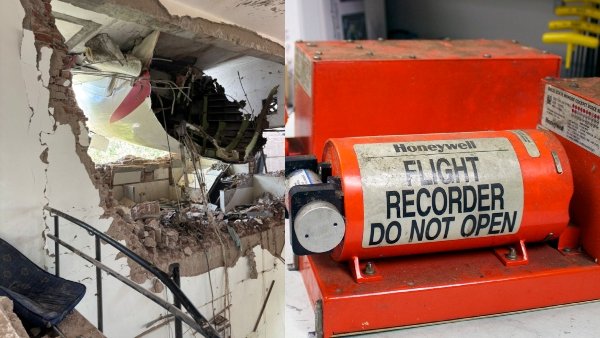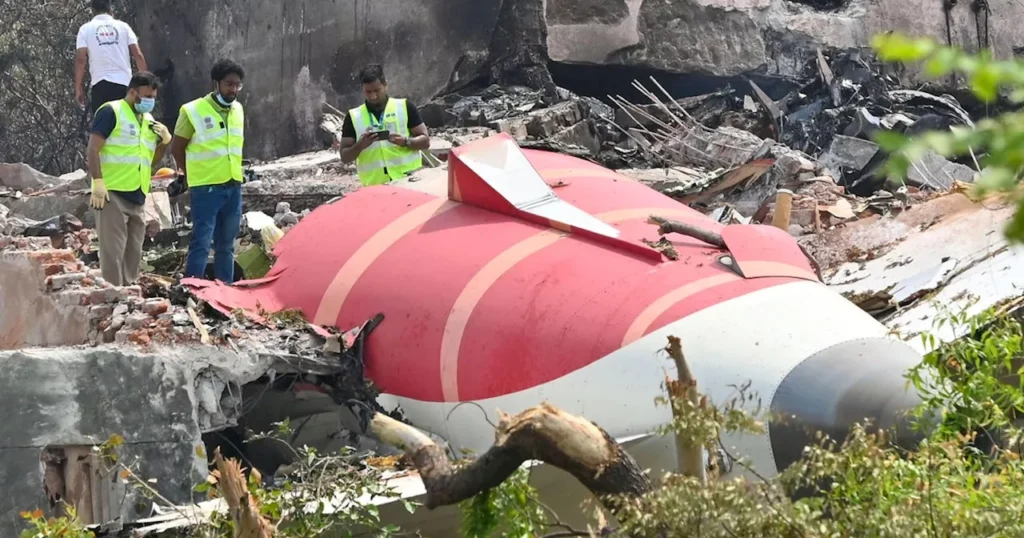
On June 12, 2025, Air India Flight AI171, a Boeing 787-8 Dreamliner, crashed shortly after takeoff from Ahmedabad’s Sardar Vallabhbhai Patel International Airport, en route to London’s Gatwick Airport. The tragedy claimed 241 of the 242 lives on board and 33 people on the ground when the aircraft slammed into a medical college hostel, sparking a massive fire. Now, as investigators scramble to uncover the cause, a critical challenge has emerged: the aircraft’s “black box”—comprising the Cockpit Voice Recorder (CVR) and Flight Data Recorder (FDR)—is severely damaged, and India’s government faces a pivotal decision on whether to send it abroad for analysis.

The Black Box: A Key to Unraveling the Tragedy
The black box, despite its name, consists of two bright orange devices designed to withstand extreme conditions. The CVR captures cockpit conversations, alarms, and ambient sounds, offering insight into the pilots’ actions and situational awareness. The FDR logs technical data like altitude, speed, and engine performance, allowing investigators to reconstruct the flight’s final moments. In the case of Flight AI171, the CVR is expected to reveal details of a distress “Mayday” call made by Captain Sumeet Sabharwal moments before the crash, while the FDR could clarify why the plane lost thrust just 36 seconds after takeoff.
Both devices were recovered from the wreckage—the FDR within 28 hours and the CVR by June 15. However, the intense fire and impact damaged the units, complicating data extraction efforts. India’s Aircraft Accident Investigation Bureau (AAIB), leading the probe with support from the U.S. National Transportation Safety Board (NTSB) and Boeing, initially attempted to analyze the devices at the newly inaugurated Black Box Laboratory in Delhi. Opened in April 2025 at a cost of Rs 9 crore, this state-of-the-art facility was designed to handle such investigations domestically. Yet, sources indicate that the extent of thermal and physical damage may exceed the lab’s current capabilities.

The Dilemma: Stay Domestic or Go Abroad?
The Indian government now faces a critical choice: continue data recovery attempts in India or send the black box to a specialized facility abroad, likely in the United States or France, where advanced forensic tools are available. The NTSB’s laboratory in Washington, D.C., is a leading candidate due to its expertise in handling severely degraded data and because the aircraft is American-made, aligning with international protocols under the International Civil Aviation Organization (ICAO).
The Ministry of Civil Aviation has urged caution against speculation, emphasizing that the AAIB will decide after assessing technical, safety, and security factors. If sent abroad, Indian officials would accompany the black box to ensure transparency and compliance with protocols. However, the decision is fraught with concerns. Some critics, voiced on platforms like Reddit, worry about potential conflicts of interest, given Boeing’s involvement and the U.S.’s influence in global aviation. Others argue that India’s reliance on foreign expertise highlights gaps in its investigative infrastructure, despite recent advancements.
The Investigation: A Race for Answers
The damaged black box is just one piece of a complex investigation. Experts are examining the wreckage, particularly the engines, to determine if they were generating power at impact. Maintenance records, fuel samples, and Boeing’s Aircraft Communications Addressing and Reporting System (ACARS) data are also under scrutiny. The sole survivor, a British-Indian passenger in seat 11A, and eyewitness accounts of the crash provide additional context.
The AAIB aims to conclude its probe within 90 days, but the black box’s condition could delay critical findings. Families of the victims, many of whom are awaiting DNA identification of remains, and communities in Ahmedabad and London’s Indian diaspora, devastated by the loss, demand clarity. Air India, owned by the Tata Group, has pledged full cooperation, offering Rs 1 crore (approximately £86,000) to each victim’s family and covering medical costs for the injured.
Looking Ahead
As India grapples with one of its deadliest aviation disasters, the black box holds the key to understanding why Flight AI171 fell from the sky. Whether analyzed in Delhi or sent abroad, its data could shape safety reforms and restore public trust. For now, the nation waits, hoping for answers to heal a wound that has shaken its skies.
Last Updated on: Thursday, June 19, 2025 7:56 pm by Sri Hari Priya Rayaprolu | Published by: Sri Hari Priya Rayaprolu on Thursday, June 19, 2025 7:56 pm | News Categories: News, India, Latest

Leave a Reply